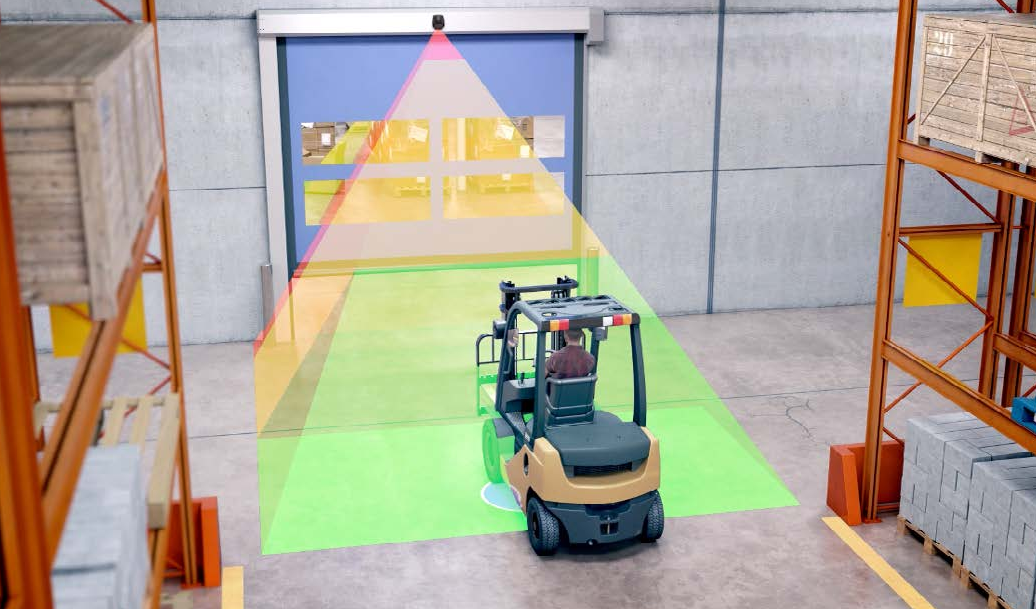A door motion sensor is a security device that detects movement near a door and triggers an alert or other programmed actions.
Introduction
In this segment, we dive into the fundamentals of door motion sensors, a critical component often employed in home and commercial security systems. We will explore what a door motion sensor is and why it holds a significant role in enhancing the safety of your living or working environment.

Definition of a Door Motion Sensor
A door motion sensor is a device that detects physical movement in a specified area near or around a door. These sensors typically operate through a variety of technologies such as Passive Infrared or Ultrasonic waves. Once the sensor detects motion, it triggers an alert or activates connected devices like alarms, lights, or surveillance cameras.
Importance in Home Security
The role of door motion sensors in home security is paramount. These sensors act as the first line of defense against potential intruders by sending immediate alerts to your mobile device or security system. By installing door motion sensors, you not only enhance the physical safety of your home but also gain peace of mind. In addition to deterring unauthorized access, these sensors can also monitor the activity of pets or children, giving you a fuller picture of what happens when you’re not around.
Types of Door Motion Sensors
In this section, we will discuss the different types of door motion sensors available on the market. Understanding these varieties will help you make an informed decision when choosing a sensor that best fits your security needs.
Passive Infrared Sensors
Also known as PIR sensors, these are the most commonly used type of door motion sensors. They detect heat signatures, often emitted by humans and animals, and trigger an alert if they sense any sudden changes in infrared energy. They are energy-efficient and less prone to false alarms compared to other types, making them a popular choice for residential settings.
Ultrasonic Sensors
Ultrasonic sensors use sound waves to detect motion. They emit ultrasonic waves and measure the time it takes for the waves to bounce back after hitting an object. Any shift in this time indicates movement, and the sensor sends an alert. While these sensors are precise, they are more sensitive to environmental factors like wind and temperature, and they consume more power.
Microwave Sensors
Less common but highly effective, microwave sensors work on the principle of Doppler radar. These sensors emit microwave pulses and analyze the reflection of moving objects. They can cover a larger area and penetrate walls, but they are more prone to false alarms and consume a lot of energy.
Dual Technology Sensors
As the name suggests, dual technology sensors combine the strengths of two different types of sensors, usually PIR and microwave. These sensors require both technologies to trigger before sending an alert, which minimizes false alarms. They offer the most comprehensive coverage but come at a higher cost and complexity.
How Door Motion Sensors Work
Understanding the mechanics behind door motion sensors can empower you to use these devices more effectively. In this section, we will delve into the detection mechanisms that these sensors employ as well as the various connectivity options that are available.
Detection Mechanisms
There are several key principles upon which door motion sensors operate, depending on the type of sensor in use. For instance, Passive Infrared Sensors detect changes in heat patterns, while Ultrasonic Sensors rely on sound waves. Microwave Sensors, on the other hand, use microwaves to detect movement. Each sensor has a designated “field of view,” and any movement within this area triggers the sensor’s alert mechanism. Modern sensors can even differentiate between human and animal movement, making the system more precise.
Connectivity Options
Once a sensor detects motion, it needs to communicate that information to a centralized system or user interface. There are various ways to do this:
- Wi-Fi: A popular choice for smart homes, Wi-Fi connectivity allows for easy integration with other smart devices and control via a smartphone app.
- Z-Wave: This is a low-energy radio wave technology that’s perfect for home automation systems. Z-Wave sensors can talk to each other, creating a mesh network for more robust coverage.
- Bluetooth: This is another low-energy option but with a more limited range. It’s often used in smaller settings like apartments.
- Wired Connection: Though less common in modern setups due to the convenience of wireless options, wired sensors directly connect to a central security panel, offering a more stable but less flexible solution.

Installation Guidelines
Proper installation is crucial for the effective functioning of your door motion sensor. Incorrectly installed sensors may lead to frequent false alarms or may even fail to detect motion when it’s most needed. This section provides a detailed guide on the tools you’ll need and the steps to follow for a successful installation.
Tools Needed
Before you start the installation process, ensure that you have the following tools at your disposal:
- Screwdriver: To tighten screws that will hold the sensor in place.
- Measuring Tape: To accurately measure the distance and height at which the sensor should be installed.
- Pencil or Chalk: For marking drill holes.
- Drill Machine: If your sensor needs to be affixed to a wall, a drill will be necessary.
- Wire Strippers: If you’re installing a wired sensor, you’ll need wire strippers for proper cable management.
Steps for Installation
- Choose the Location: The first step involves deciding where you want to install the sensor. The height and angle are crucial factors in ensuring that the sensor covers the desired area effectively.
- Mark the Spot: Use a pencil or chalk to mark the area where the sensor and its mounting bracket will go. Use a measuring tape to confirm distances and heights.
- Drill Holes: If your sensor requires drilling, use a drill machine to create holes based on the markings you’ve made. Make sure to follow the manufacturer’s guidelines to avoid damaging the sensor or your wall.
- Install the Bracket: Screw in the mounting bracket at the drilled holes. Again, a screwdriver comes in handy here.
- Affix the Sensor: Once the bracket is securely in place, attach the sensor. If it’s a wired model, this is when you’d use wire strippers to properly manage the cables.
- Connect to Network: Depending on the sensor’s connectivity options, such as Wi-Fi or Z-Wave, you’ll need to pair it with your home network or security system.
- Test the Sensor: Before finalizing the installation, test the sensor multiple times to ensure that it’s working correctly. Walk in front of the sensor to see if it detects your motion and sends alerts as intended.
Choosing the Right Door Motion Sensor
Selecting the right door motion sensor can feel like a daunting task given the myriad of options available. However, knowing what factors to consider can simplify the process significantly. This section aims to guide you through the important considerations you should make and introduces some of the popular brands you might come across in your search.
Factors to Consider
When you’re in the market for a door motion sensor, here are some essential factors to consider:
- Sensitivity: How responsive do you want your sensor to be? Some sensors can be fine-tuned to minimize false alarms.
- Range: Depending on the area you need to cover, the sensor’s range could be a deciding factor.
- Power Source: Does the sensor use batteries, or does it need to be wired into your home’s electrical system? Each has its pros and cons.
- Connectivity: Assess how the sensor will connect to your existing system. Options include Wi-Fi, Z-Wave, and Bluetooth.
- Ease of Installation: Some sensors are easier to install than others. Your technical expertise may dictate your choice here.
- Price: Like any other product, sensors come in a range of prices. Higher cost often equates to more features or better quality, but that’s not always the case.

Popular Brands
Several well-known brands have established reputations for quality and reliability in the door motion sensor market:
- Ring: Known for its easy-to-install and user-friendly products that easily integrate with other smart home devices.
- Nest: A Google-owned company that specializes in smart home equipment. Their sensors are known for high-quality performance and compatibility with Google Home.
- ADT: A giant in the home security industry, ADT offers a wide range of sensors with professional installation options.
- Honeywell: Known for a variety of security solutions, from basic models to highly advanced sensors with numerous features.
Integration with Smart Home Systems
The effectiveness of a door motion sensor is greatly amplified when it’s part of a larger smart home ecosystem. Seamless integration can offer you more control, improved automation, and a higher degree of comfort and safety. This section will delve into how you can ensure compatibility with IoT devices and how to set up alerts and notifications for optimal use.
Compatibility with IoT Devices
One of the first things to consider is how well the door motion sensor integrates with other Internet of Things (IoT) devices you may already have or plan to install. Here are some common scenarios:
- Voice Assistants: Brands like Nest work well with Google Assistant, while Ring sensors can be controlled using Amazon Alexa.
- Smart Lighting: If you’re using smart bulbs or lighting systems, look for a sensor that can trigger these lights to turn on when motion is detected.
- Smart Thermostats: Some advanced setups can even adjust the room temperature when they detect that you’ve entered or left a room.
- Security Cameras: Integration with smart security cameras can allow for real-time video capture when motion is detected.
Setting Up Alerts and Notifications
Staying informed is key to utilizing your door motion sensor effectively. Alerts and notifications play a significant role here. Here’s how to set them up:
- Mobile Alerts: Most smart sensors come with a companion app that lets you receive real-time alerts on your smartphone whenever motion is detected.
- Email Notifications: For those who prefer a less intrusive approach, some sensors can send you email alerts.
- Integration with Smart Hubs: If you’re using a smart hub like Apple HomeKit or Samsung SmartThings, you can centralize all your notifications within these platforms.
- Custom Actions: Advanced setups allow you to program custom actions, such as sending you a video clip when motion is detected or sounding a siren.
